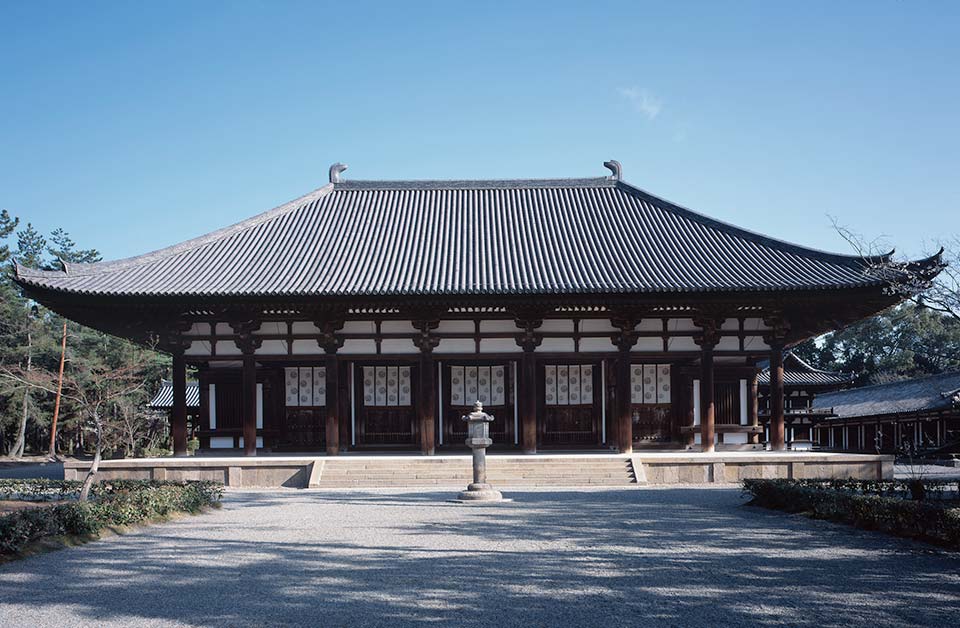Introduction
Toshodaiji Temple, located in the heart of Nara Prefecture, Japan, is a Buddhist temple of immense historical significance. Founded in 759 AD by the Chinese priest Ganjin, this temple played a crucial role in the development of Japanese Buddhism. With its stunning architecture and rich cultural heritage, Toshodaiji offers visitors a glimpse into Japan’s spiritual past and artistic excellence.
Key Highlights
- Founded in 759 AD by Chinese priest Ganjin
- Features important structures like the Main Hall and Lecture Hall
- Houses a famous wooden statue of Ganjin
- Beautiful temple grounds with serene pathways
- Conveniently located in central Nara
Historical Background
Toshodaiji Temple (唐招提寺, Tōshōdaiji) was established in 759 AD by Ganjin, a revered Chinese priest. Invited by the Japanese emperor to improve Buddhism in Japan, Ganjin’s journey was fraught with challenges. After six unsuccessful attempts to cross the sea, during which he lost his eyesight, Ganjin finally arrived in Japan in 754 AD and began his mission in Nara.
The name “Toshodaiji” roughly translates to “temple of the one invited from Tang China,” honoring Ganjin’s monumental influence on Japanese Buddhism. Today, the temple stands as a testament to Ganjin’s contributions and houses priceless artifacts of Japanese Buddhist history.
Main Attractions
Main Hall (Kondo)
The Main Hall, a national treasure of Japan, dates back to the 8th century. It exemplifies the architectural style of the Nara period, with its imposing roof and striking red exterior. Inside, visitors can find a statue of Ganjin, which is displayed to the public only once a year around June 6th, the anniversary of Ganjin’s death.
Lecture Hall (Kodo)
The Lecture Hall was originally an administrative building from the Nara Imperial Palace, later relocated to Toshodaiji. As one of the oldest surviving palace structures in Japan, it offers visitors a rare glimpse into ancient Japanese imperial architecture. The hall’s intricate decorations make it a must-see for architecture enthusiasts.
Bell Tower
The temple boasts an impressive bell tower from the Heian period. This iconic structure adds to the temple’s serene atmosphere, with its deep, resonant tones echoing across the grounds.
Ganjin’s Grave
Following a small path through lush foliage leads to Ganjin’s grave. This secluded area exudes tranquility, offering visitors a peaceful spot for reflection and meditation.
Best Time to Visit
Spring for cherry blossoms and autumn for vibrant foliage are the most picturesque seasons to visit Toshodaiji. Additionally, the annual display of Ganjin’s statue around June 6th provides a unique cultural experience.
Getting There
Toshodaiji is easily accessible from central Nara.
By Train:
Take the Kintetsu Nara Line from Kintetsu Nara Station to Yamato-Saidaiji Station, then transfer to the Kintetsu Kashihara Line. The journey takes about 15 minutes and costs 300 yen. The temple is a 500-meter walk from Nishinokyo Station.
By Bus:
Buses 72, 78, and 98 run from Kintetsu Nara Station (20 minutes, 270 yen) and JR Nara Station (15 minutes, 270 yen) to Toshodaiji Temple. Alight at the Toshodaiji bus stop directly in front of the temple.
Hours and Admission
Open: 8:30 AM – 5:00 PM (last entry at 4:30 PM)
Open year-round
Admission: 1000 yen for adults
Visitor Tips
- Explore the Main Hall and Lecture Hall to appreciate traditional Japanese architecture
- Take a leisurely stroll along the temple’s serene pathways
- Visit on June 6th to see the rare display of Ganjin’s statue
- Purchase tickets in advance and visit during off-peak hours to avoid crowds
Official Website
Conclusion
Toshodaiji Temple is an essential stop on any trip to Nara. This 8th-century temple stands as a testament to the cultural exchange between China and Japan in the realm of Buddhism. As you wander its grounds, you’ll not only witness exceptional Buddhist art but also experience the unique charm of traditional Japanese culture. Whether you’re a Buddhist devotee or simply a culture enthusiast, Toshodaiji offers a rewarding journey into Japan’s rich spiritual heritage.
